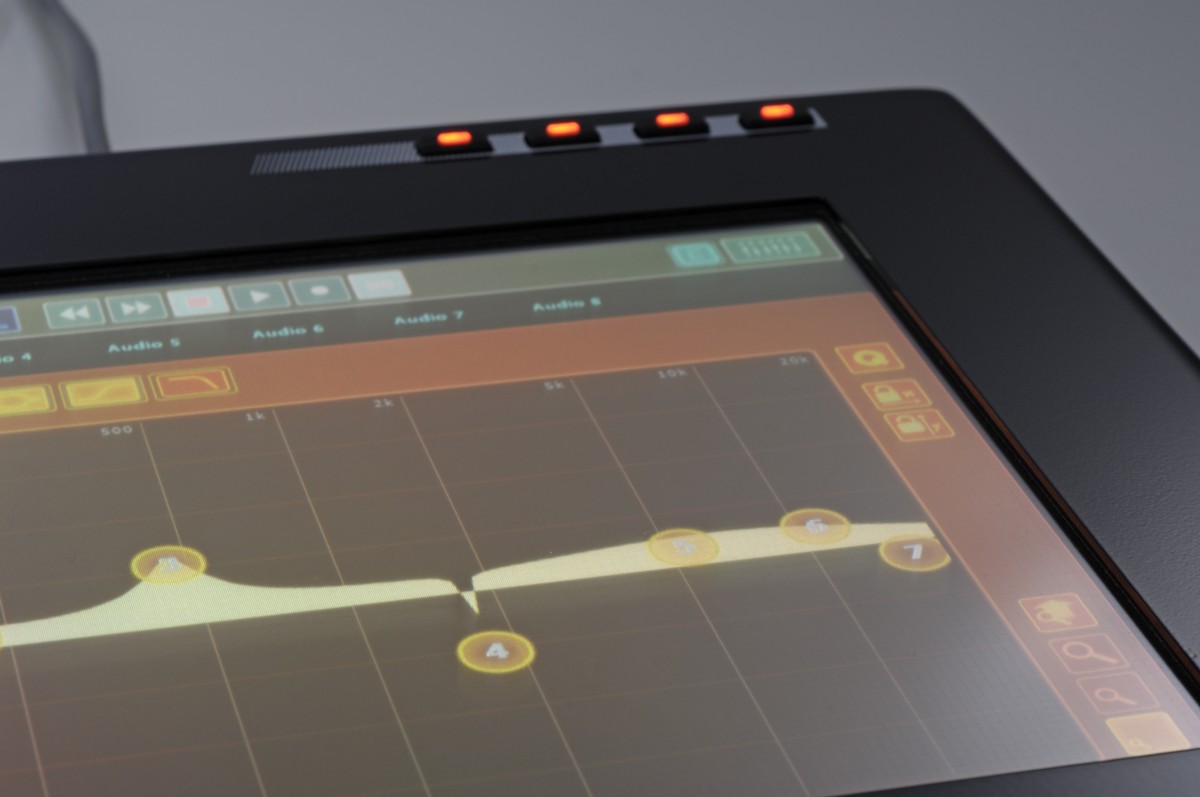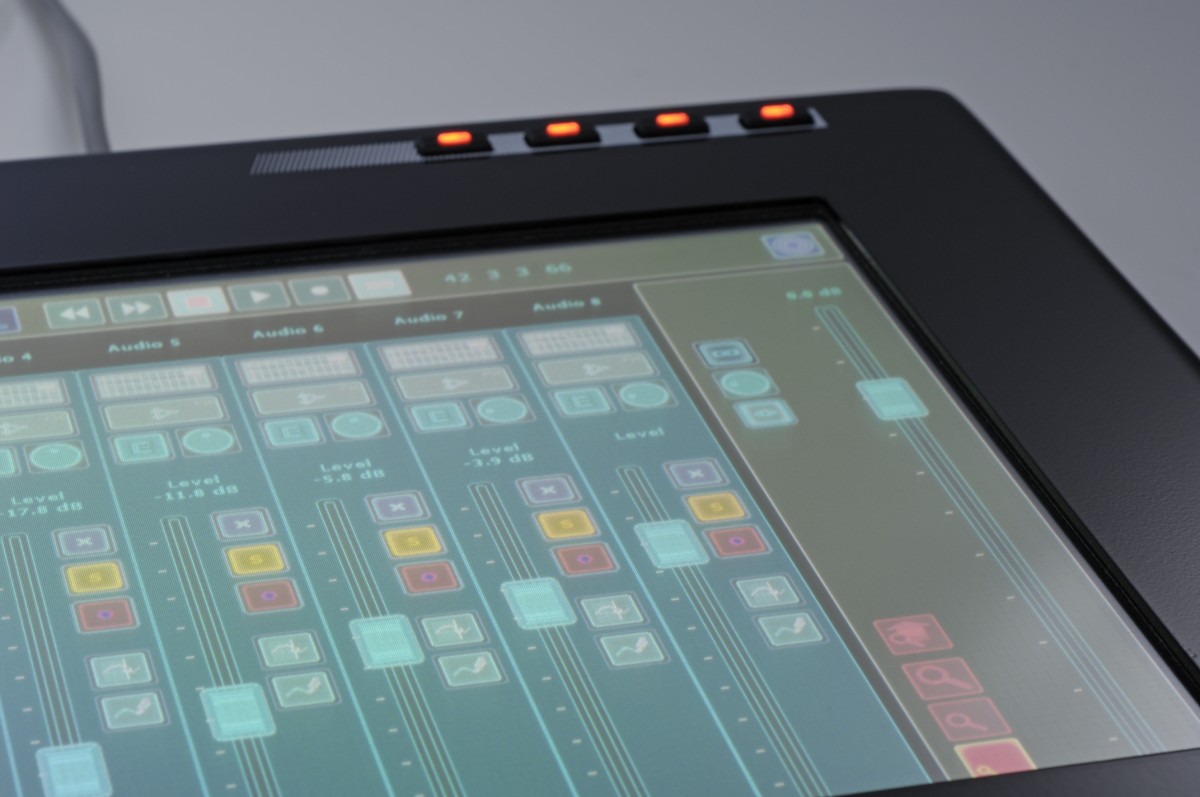MusicRadar Verdict
The Dexter offers just the right balance between supreme style and worthy substance.
Pros
- +
A new way of controlling your DAW. Slick interface. Reatively easy to set up. Lots of clever touches.
Cons
- -
Needs to support more software. Won't be to everyone's taste.
MusicRadar's got your back







Back in the glorious days of hardware, it was easy to get the feeling that your studio had more control over you than you did over it. Frequently, synths would mysteriously lose MIDI connectivity, or would suddenly stop responding to controllers. No two days were quite the same and while it's easy to get misty-eyed and nostalgic now, at the time it was a right pain in the downstairs-round-the-back.
One of the greatest pleasures to have emerged from the software revolution is that we now feel much more in control. The catch, of course, is that mouse control tends to be most people's sole connection to their software, making simultaneous tweaks impossible and putting a barrier between producers and their gear. The glut of keyboard-based and standalone controllers lining the shelves of your local store give an indication that this situation isn't everyone's cup of tea.
Of all the controller products available, perhaps JazzMutant's own Lemur has been the most eye-catching. The Dexter represents JazzMutant's second foray into the world of GUI-based software control, but takes away the Lemur's 'do anything' open nature in favour of a potentially more popular plug-and-play instant solution.
Getting started
The Dexter connects to your host PC or Mac via ethernet and is currently compatible with Logic, Cubase, Sonar and Nuendo. To get going, you need to run the host software and, for Logic users only, a second application called JazzDaemon, which helps handle real-time information exchange between the Dexter and your computer
.
After installation, Dexter automatically picks up a TCP/IP number from your computer, so you're free to complete the hardware handshake by selecting your computer name on a dedicated Dexter setup page. Once you boot your software of choice (in our case Logic), the name 'Dexter' appears in your list of available control surfaces.
Logic users should note that you'll always need JazzDaemon open before you boot Logic for communication to take place.
Want all the hottest music and gear news, reviews, deals, features and more, direct to your inbox? Sign up here.
Once you're faced with Dexter's GUI, you can't fail to be impressed. The screen's icons are shown in a kind of glossy retro-futurist cool - almost an extension of the look Ableton have adopted for Live.
The main mixer screen offers access to eight individual tracks and the master output simultaneously, with the latter displayed in a separate box to the right. Each individual track features a long-throw fader; a pan button, which renders the fader a pan control instead; quick access to mute, solo and track arm modes as well as shortcuts to a track's EQ plug-in (assuming you've set one up), and a dedicated Track Edit button (pressing this means that Dexter's whole screen focuses on the settings for that single selected track).
The Master section within the Track editor also displays bus sends and levels assigned to these. To edit a send level, press the relevant send and its icon flashes. You can then use the fader to adjust the send amount. Un-toggle the Buss icon and you're done.
The master fader itself has tricks up its sleeve too, not the least of which is a zoom control. This enables you to focus in on a specific area of the fader's travel. When automating volume, it's frequently the case that you don't need every decibel from maximum to silence, with more subtle changes often more appropriate. The Zoom mode lets you tailor the fader's area of operation, so that more discrete movements are easier to execute. Very neat indeed.
Getting around
Navigating your way around Dexter is immediate. It's possible to jump between screen set-ups very easily and despite only eight tracks being visible at any one time, the Bank Browser button in the top left-hand corner lets you see an overview of groups of eight tracks at a time, so you can easily jump to the bank you need.
A tiny red dot shows which track is highlighted in your arrangement, and this helps navigation further. Similarly, tracks can be grouped in two ways.
Firstly, any solo'd tracks can be called into a group with a single press of the Master Solo button in the main menu strip, so you can bring a motley crew of audio tracks and instruments together for simultaneous editing if you so desire. Dexter also offers eight software groups of its own: simply select a group, press on each of the tracks you'd like to appear in that group and they're immediately assigned for recall whenever you choose.
To prevent you making tweaks you didn't quite intend, it's possible to lock vertical or horizontal movements to either the EQ graph, or to the X-Y axis in the main Track editor. This is really useful if, for instance, you want to tweak cutoff without affecting resonance.
Taking the lead from surfaces like Digi's 003, any track names assigned to elements of your mix immediately appear, unabbreviated, at the top of each mixer strip, which means that rather than having to remember what 'Inst8' represents, you really can move around with ease.
One massive tick in Dexter's ergonomics box is the way it handles effects editing. Any parameters within a plug-in are listed and assigned a fader, with careful labelling and current setting position at the top. Eight parameters are displayed simultaneously and in this mode, Dexter creates a set of Bank buttons underneath the editor to enable you to jump to the next set of eight controls.
Dexter doesn't just map native plug-ins - third-party effects are supported and work just as seamlessly. Each plug-in is listed sequentially if you've set up a chain, and each one also features a power light, which acts as an effects bypass button if activated. Taking their lead from the master output, the faders are 'zoomable' here too.
Summing up
For some people, building a screen-based controller for software might seem a bit like building a pint glass out of beer. Certainly, swapping one graphical interface for another won't wash well with everyone, but we wouldn't count ourselves amongst the doubters.
For us, Dexter represents a good compromise between a tactile control surface and a neat-and-tidy unit that can graphically keep pace with your workflow. Lots of people like endless knobs and buttons, but equally, there are plenty of people around who either grow tired of their sliders not keeping track with settings, or who spend their days listening as much to motorised faders zipping up and down as to the music they're working on.
What we like most about Dexter, though, is that it keeps you in touch with settings when plug-in surfaces or slider positions are closed or off-screen.
We're lucky enough to work with two monitors, yet we still found being able to see EQ curves, delay graphs, fader positions and surround sound assignments simultaneously a more efficient use of a screen than the majority of screensets we've created for Logic ourselves.
Ultimately, Dexter needs to support more applications before its appeal can be truly universal. We suspect that when support for Ableton Live appears, we'll begin to see Dexters regularly appearing on stage as well as in the studio.
In the meantime, if you want a controller that will literally get you looking at your host software in a new way, with a 21st Century balance of intergalactic looks and real tactility, then this is for you.
MusicRadar is the number 1 website for music makers of all kinds, be they guitarists, drummers, keyboard players, djs or producers...
GEAR: We help musicians find the best gear with top-ranking gear round-ups and high- quality, authoritative reviews by a wide team of highly experienced experts.
TIPS: We also provide tuition, from bite-sized tips to advanced work-outs and guidance from recognised musicians and stars.
STARS: We talk to musicians and stars about their creative processes, and the nuts and bolts of their gear and technique. We give fans an insight into the actual craft of music making that no other music website can.
